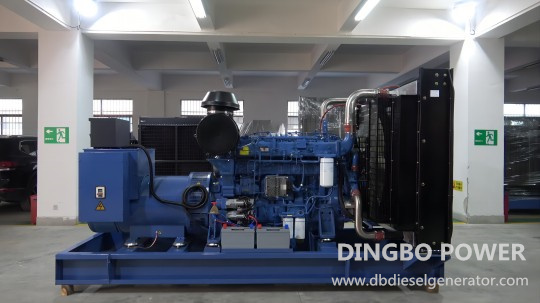Diesel generators play an important role in the power generation industry. Their robustness, longevity, versatility and efficiency make them an indispensable power solution. These powerful machines are widely used for a variety of purposes. Diesel-powered generators consist of many technical components which work together to convert mechanical energy into electrical energy. In this article, let’s look at the diesel generator parts and functions.
Diesel engine
The diesel engine is the source of mechanical energy input for generators. The size of the engine corresponds with the amount of electrical energy produced. It means that the larger the engine size, the higher the desired output power. Industrial diesel generators need to be large and powerful because they operate in an industrial environment where power is in high demand. Thus, the engines of industrial generators will be larger than the generators for home use.

Alternator
An alternator is responsible for power output generation. It contains mechanical device and also the rotor. The alternator uses mechanical energy generated by the diesel engine to drive the rotor and create a magnetic field moving around the stator, which causes an alternating current.
Fuel system
The fuel system usually consists of fuel tank, fuel pipe, fuel pump, fuel filter, fuel injector and other components. The fuel tank stores a decent quantity of fuel to power for many hours at a stretch. The size of tank dictates its power generation capabilities in terms of duration. Diesel generator fuel tanks can either be an auxiliary or a tank mounted to the generator. Low noise diesel generators are typically provided as standard with the fuel tanks on the base of the electric generator. The fuel pipe connects the tank to the engine whereas a come back pipe connects the engine to the fuel tank. The fuel pump uses pressure from electric motors to draw fuel from the external tank and inject it into the engine cylinder.
Voltage regulator
The voltage regulator is designed to regulate the voltage output. It is the most complicated component of an electric generator, in a manner of speaking. Voltage regulator acts as the brain of the generator and guarantees that the unit generates electricity at a proper steady voltage. Automatic voltage regulator (AVR) controls the exciter’s input voltage and provides surge protection against electrical surges, spikes and generator overloads.
Cooling system and exhaust system
The cooling system is responsible for preventing the generator from overheating. There are two main types of diesel generator cooling systems: air-cooled and liquid-cooled. The cooling method is often determined by the size and type of generator. Air cooling systems are usually implemented for smaller generators, whereas larger generators require liquid-cooled systems.
As the engine burns fuel, it creates toxic gases that are harmful to human health and/or the environment. The exhaust system is used to safely remove these harmful gases produced during operation. The exhaust system consists of several parts, including the exhaust manifold, muffler, and exhaust pipe.
Lubrication system
The function of the lubrication system includes reducing wear and heat generation by placing a film of lubricating oil between the parts of the engine and removing a portion of the heat generated as a normal part of engine operation. A properly lubricated system allows the diesel generator exceptionally operates smoothly for an extended period.
Air filter
Air filters play a big role in the operation of any diesel generator. Outside air is required for the combustion process of the generator, but the air contains a range of pollen, sand, dust and other additives that affect the machine. Air filters can block all the contaminated particles and only allow clear air to pass through. They can help prevent the generator from reduced efficiency and high fuel consumption.
Battery and battery charger
Diesel generators contain moving parts and require a battery as a trigger to start automatically. Battery failure can cause the generator fails to start. Some generators are also equipped with a battery charger to charge the battery automatically when the generator is operating.
Read also: How to Maintain battery to Avoid Diesel Generator Set Failure?
Control panel
The control panel is user interface that allows you to control the generator, as well as check on system diagnostics, overall functions, and current status of a generator. Additionally, it can offer synchronization for the initiation of parallel operations. With it, you can perform various tasks or verify specific items.
Main assembly frame
The main frame of the assembly of the generator holds everything together and provide the structural support and protection for the internal workings of the generator. Diesel generators can be classified as open-frame or enclosed-frame based on the appearance and structure. The enclosed-frame generator is also known as closed or canopied generator, which are usually housed in a protective enclosure for extra safekeeping and sound attenuation. Weatherproof enclosures offer protection from moisture and extreme temperatures.
Contact Dingbo Power to get the right diesel generator
Dingbo Power is a manufacture of diesel generators. We integrate design, supply, commissioning and maintenance of diesel gensets and provide our customers with quality and affordable products. Our experts with in-depth knowledge will help you find the generator that best meet your needs and budget. Don’t hesitate to reach out for any further information or assistance regarding to power generator solution. Contact us at dingbo@dieselgeneratortech.com, and we will gladly help you.
Comments
Post a Comment